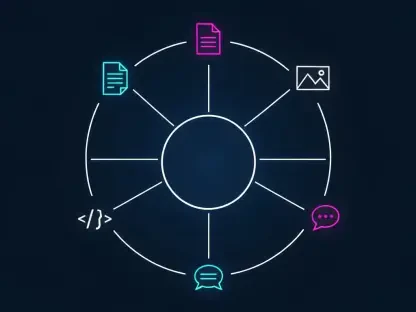In today’s rapidly evolving technological landscape, software engineering leaders play a pivotal role in shaping business outcomes and driving organizational success. Their influence extends beyond coding and technical expertise, reaching into strategic planning, product development, and collaborative innovation. The strategic integration of emerging technologies, such as artificial intelligence (AI), into software solutions is transforming how businesses operate and compete in the market. Understanding these dynamics is crucial for leaders aiming to leverage software engineering as a catalyst for achieving business goals. This exploration uncovers essential strategies and practices that can align software engineering efforts with overarching business objectives.
Understanding the Strategic Role of Software Engineering Leaders
Assessing Capabilities and Setting Objectives
Software engineering leaders can effectively drive business results by comprehensively assessing their teams’ current capabilities and establishing clear strategic objectives. Critically evaluating the present state of an organization’s software development processes is fundamental in identifying strengths, gaps, and opportunities for growth. This involves benchmarking against industry standards and ensuring alignment with customer expectations and business needs. Leaders should harness tools such as capability maturity models and stakeholder feedback to construct a detailed roadmap for improvement. By measuring baseline effectiveness and identifying key performance indicators (KPIs), engineering teams can strategically prioritize areas needing enhancement, fostering an environment that cultivates innovation and agility.
Planning Investments and Measuring Impact
Prudent planning and evaluation of investments are imperative for software engineering leaders to generate tangible business value. Investment decisions should be grounded in rigorous feasibility analysis, emphasizing practices, tools, and capabilities that offer substantial returns. Leaders must consistently weigh financial implications through return on investment (ROI) assessments, aligning expenditures with the organization’s long-term strategic objectives. Emphasizing frameworks like objectives and key results (OKRs) facilitates demonstrating how advancements in engineering can translate into broader business success. These frameworks enable leaders to quantify enhancements, ensuring that investments in innovation yield measurable outcomes that propel the organization toward achieving its ultimate goals.
Building Collaborative and Customer-Centric Teams
Encouraging Cross-Functional Collaboration
The success of software engineering hinges on fostering robust collaboration between diverse teams within an organization. Leaders should spearhead initiatives that integrate software engineering teams with product management, designers, and customer service experts. Bridging gaps between these functions empowers engineering teams to gain deeper insights into customer expectations and market dynamics. Incorporating agile methodologies and interactive design practices, such as user-centered design and feedback loops, can expedite responses to shifting business priorities. Encouraging open communication and iterative processes enables teams to deliver solutions aligned with customer needs and anticipates emerging trends, thus fostering a proactive stance towards market pressures and demands.
Strengthening Design and Product Management
Strengthening design and product management capacities within engineering teams equips organizations with the tools needed to remain competitive and inventive. Leaders should cultivate an atmosphere that integrates design thinking and rigorous user research into core engineering processes. Clarifying roles and responsibilities is essential; developers should be well-versed in design principles and adhere to established design systems. Cooperation with product managers to harmonize design and development efforts ensures consistency across user experiences. These strategies not only streamline processes but also enhance product quality and consumer satisfaction, thereby driving competitive advantage and reinforcing customer loyalty in saturated markets.
Fostering Security and Quality in Software Delivery
Implementing Security-First Approaches
Security is paramount in software engineering, and leaders must prioritize fostering acute security skills across all engineering teams. The integration of security measures is crucial at every stage of the development lifecycle using practices like secure coding and DevSecOps approaches. By emphasizing a ‘shift-left’ and ‘shift-right’ testing methodology, leaders can continuously refine security protocols from inception to deployment. This holistic approach enhances operational efficiency and mitigates risks by embedding comprehensive security protocols into everyday processes. Championing a security-first culture not only protects sensitive data and prevents breaches but also instills trust and reliability among users and stakeholders.
Cultivating a Quality-Driven Culture
Establishing a quality-driven culture is instrumental in delivering high-value software products that resonate with business objectives. Leaders should advocate for rigorous testing and quality assurance practices throughout the development cycle. Implementing continuous integration and continuous delivery (CI/CD) pipelines ensure rapid deployment without sacrificing product integrity. By instilling a mentality that prioritizes quality in every phase from conception to release, teams can significantly reduce errors and costs associated with post-release fixes. This focus on quality leads to greater customer satisfaction, preserving brand reputation, and ultimately contributing to sustained business success through reliable, high-quality software products.
Scaling Delivery to Maximize Business Value
Leveraging Platform Engineering
To optimize value delivery and combat inefficiencies, software engineering leaders can concentrate on establishing platform engineering teams dedicated to creating reusable components. The formation of such teams not only enhances consistency in outputs but also fosters collaboration among programmers, designers, and product managers. Appointing API product managers to maintain coherent governance and strategy enhancement ensures that all platforms operate harmoniously and effectively. These initiatives streamline operations by reducing duplications and centralizing software components, thus maximizing resource utilization and boosting productivity in software delivery endeavors.
Centralizing Communication and Governance
Centralizing communication and governance through shared internal developer portals enhances transparency and collaboration across various engineering initiatives. By managing visibility into all ongoing projects and maintaining governance standards, leaders can create cohesive environments where information flows seamlessly. This visibility empowers teams to align their efforts with organizational goals efficiently. Moreover, effective governance frameworks guide engineers in executing tasks while adhering to best practices and compliance requirements. These strategies not only minimize risks but also maximize delivery consistency, ensuring that engineering endeavors contribute positively to overarching business objectives, thus sustaining business growth and innovation.
Continuous Reassessment and Improvement
Embracing Iterative Planning
Continuous reassessment and iterative improvement are essential in a software engineering leader’s toolkit. Economic landscapes and technological advancements are constantly shifting, presenting new challenges and opportunities for growth. Leaders need to re-envision plans regularly, reprioritize investments, and remain adaptable in facing evolving goals. Embracing iteration in planning ensures that organizations remain aligned with their driving objectives, adapting swiftly to any unforeseen technological disruptions. This flexibility fosters agility and encourages the capability to capitalize on new opportunities while remaining faithful to core business aims, thereby sustaining competitiveness and promoting resilience in dynamic markets.
Refocusing on Tangible Customer Value
In today’s fast-changing technological environment, software engineering leaders play a crucial role in shaping company outcomes and driving organizational success. Their impact goes beyond mere coding and technical knowledge, extending into strategic planning, product development, and promoting collaborative innovation. The seamless integration of cutting-edge technologies, like artificial intelligence (AI), into software solutions is revolutionizing the way businesses operate and compete in the marketplace. Recognizing these dynamics is vital for leaders who wish to harness software engineering as a powerful tool to achieve business goals. This exploration highlights key strategies and practices needed to align software engineering efforts with broad business objectives. Software leaders must embrace these innovations, anticipate technological shifts, and foster cross-functional collaboration to ensure software solutions are both forward-thinking and aligned with the company’s vision. As these leaders strategize, their profound understanding of technology serves as a catalyst for driving business growth and transformation.









